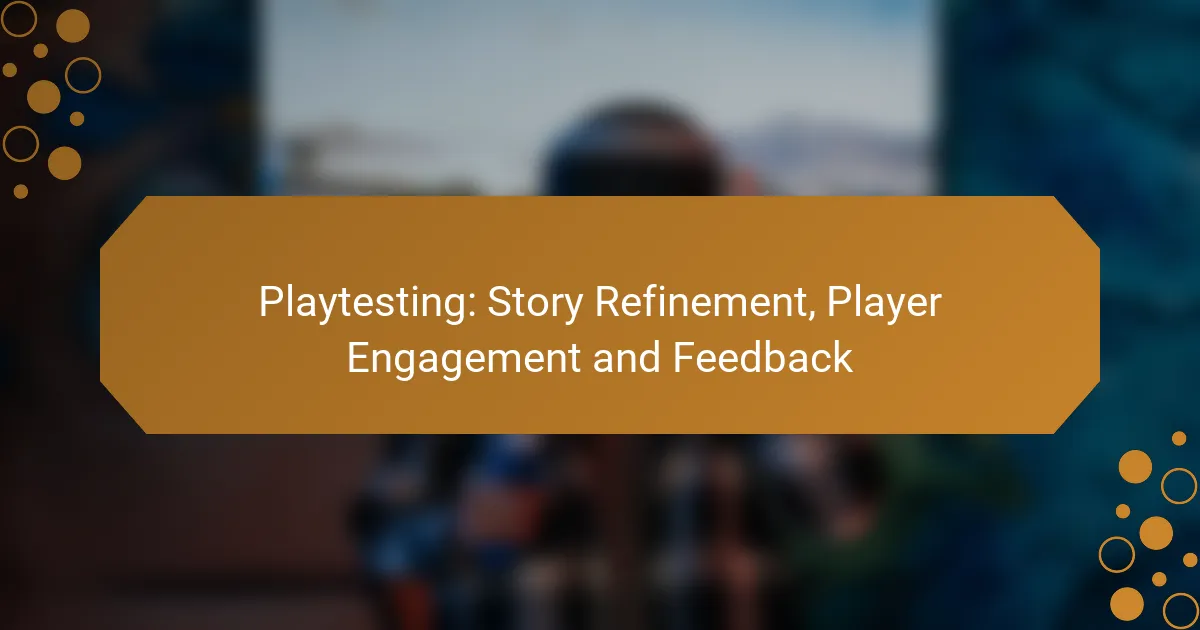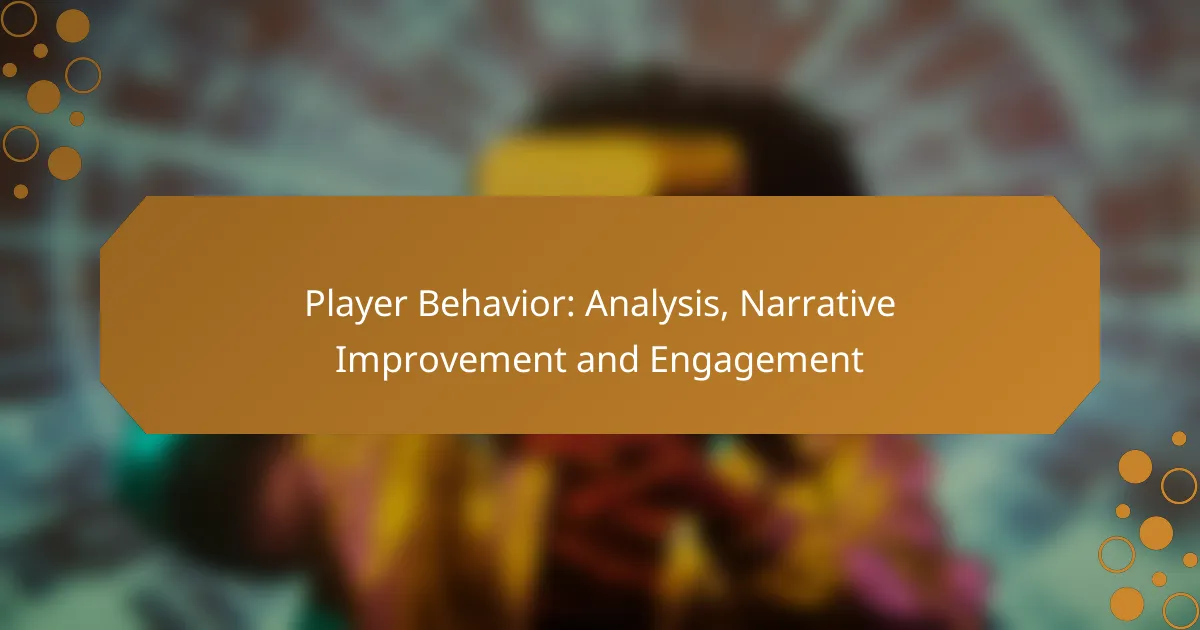Playtesting is a crucial step in the game development process, as it allows developers to refine their stories through direct player feedback. By identifying narrative strengths and weaknesses, creators can enhance engagement and coherence, ultimately leading to a more immersive experience. Employing effective methods and tools during playtesting not only fosters player involvement but also streamlines the feedback collection process, ensuring that insights are actionable for narrative improvement.
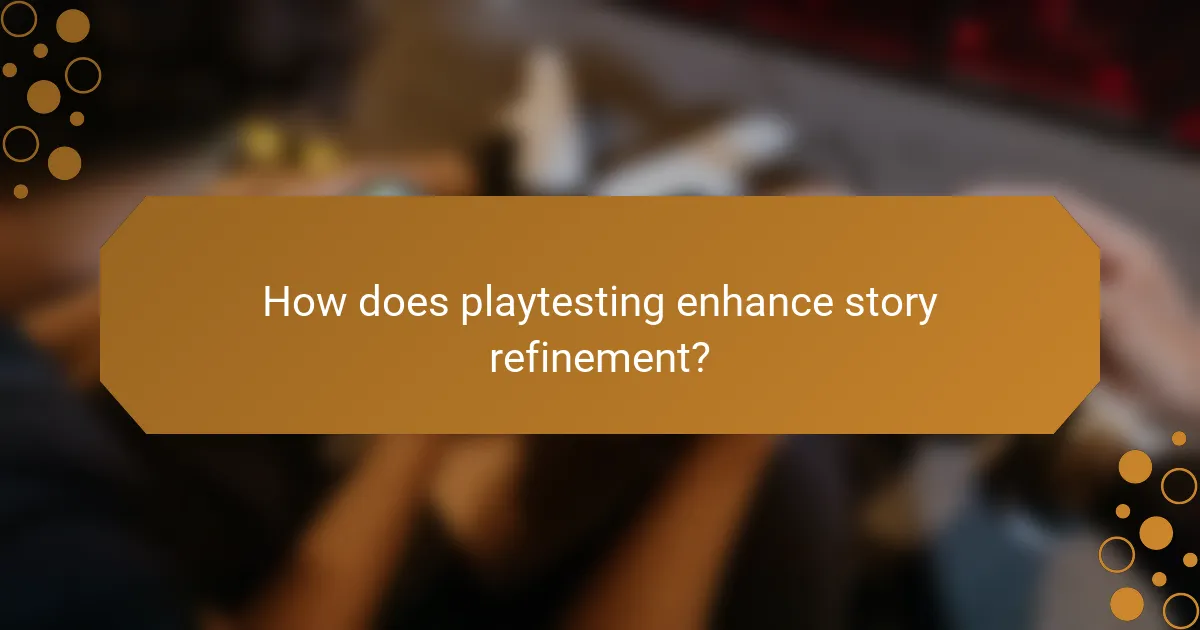
How does playtesting enhance story refinement?
Playtesting significantly enhances story refinement by providing direct feedback from players, allowing developers to identify weaknesses and strengths in narrative elements. This process helps creators make informed adjustments to improve engagement and coherence in the story.
Identifying narrative flaws
Through playtesting, developers can pinpoint narrative flaws that may not be apparent during initial writing. Players may encounter plot holes, inconsistencies, or confusing story arcs that disrupt their experience. Observing player reactions and gathering their feedback can highlight these issues effectively.
For example, if players express confusion about a character’s motivations, it may indicate a need for clearer storytelling or additional context. Regular playtesting can help catch these flaws early, saving time and resources in later development stages.
Improving character development
Playtesting allows developers to assess how well characters resonate with players. Feedback can reveal whether characters are relatable, engaging, or adequately developed. Players may provide insights into their emotional connections or lack thereof, guiding writers in refining character arcs.
For instance, if a character’s backstory feels underdeveloped, playtesters might suggest adding more depth or motivation. This iterative process can lead to richer, more compelling characters that enhance the overall narrative.
Testing plot pacing
Effective plot pacing is crucial for maintaining player interest, and playtesting helps identify areas where pacing may falter. Developers can observe how players respond to different sections of the story, noting where they lose interest or feel rushed. This feedback is vital for adjusting the flow of the narrative.
For example, if players rush through a climactic scene, it may indicate that the buildup was insufficient. Adjusting pacing based on player feedback can lead to a more satisfying narrative experience.
Gathering player insights
Player insights are invaluable for understanding how a story is perceived. Playtesting sessions can include surveys or discussions to gather detailed feedback on specific narrative elements. This qualitative data helps developers understand player preferences and expectations.
For instance, asking players what they enjoyed or found confusing can guide future revisions. Engaging with players directly fosters a sense of community and investment in the story’s development.
Iterative feedback loops
Creating iterative feedback loops is essential for continuous improvement in story refinement. After each playtesting session, developers should analyze feedback, implement changes, and conduct further testing. This cycle allows for gradual enhancements and ensures that the story evolves based on player experiences.
Establishing a regular schedule for playtesting can help maintain momentum in development. By consistently refining the narrative through player input, developers can create a more polished and engaging story that resonates with their audience.
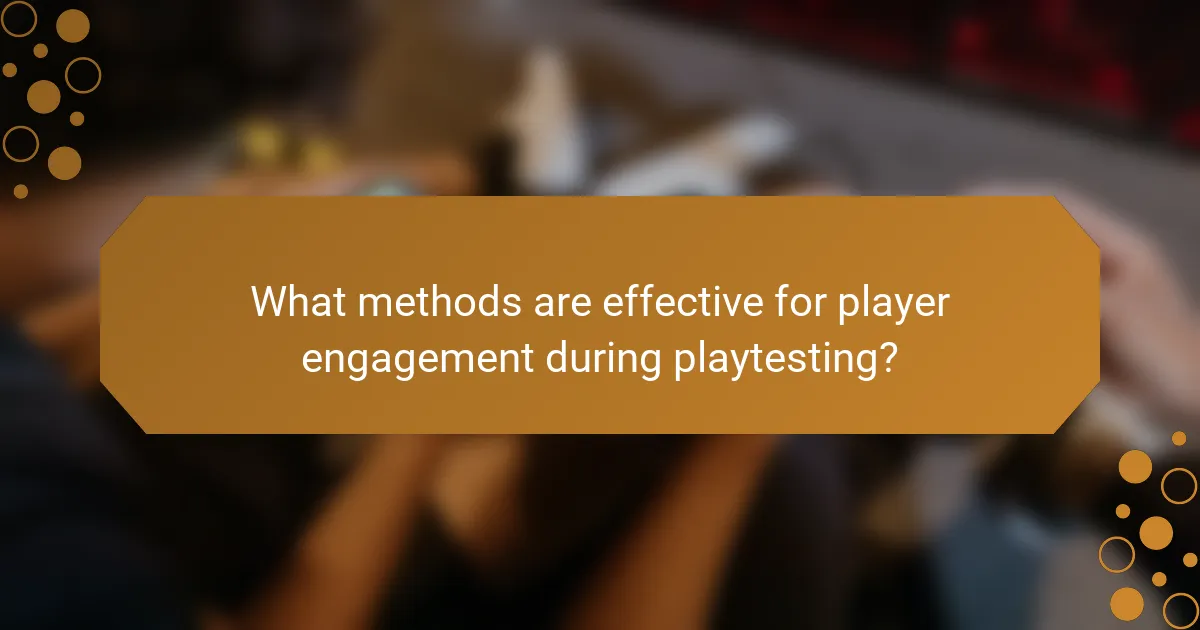
What methods are effective for player engagement during playtesting?
Effective methods for player engagement during playtesting include interactive storytelling, incorporating player choices, and creating immersive environments. These techniques foster deeper connections between players and the game, enhancing feedback quality and overall experience.
Interactive storytelling techniques
Interactive storytelling techniques allow players to influence the narrative, making them feel more invested in the game. This can be achieved through branching storylines or character-driven plots that respond to player actions. For example, offering multiple dialogue options can lead to different outcomes, keeping players engaged and encouraging them to explore various paths.
When implementing these techniques, consider pacing and clarity. Ensure that players understand the consequences of their choices without overwhelming them with options. A balance between guided and open-ended storytelling can enhance engagement.
Incorporating player choices
Incorporating player choices is crucial for engagement, as it empowers players to shape their gaming experience. Allowing players to make meaningful decisions can lead to greater emotional investment and satisfaction. For instance, choices that affect character relationships or game endings can significantly enhance replayability.
To effectively integrate choices, ensure they are impactful and relevant to the overall narrative. Avoid trivial decisions that do not affect the game’s outcome, as these can lead to player frustration. Instead, focus on choices that resonate with the story and the player’s journey.
Utilizing immersive environments
Utilizing immersive environments enhances player engagement by creating a believable and captivating world. High-quality graphics, sound design, and environmental storytelling can draw players into the game. For example, a richly detailed setting with interactive elements encourages exploration and discovery.
When designing immersive environments, pay attention to sensory details that enhance realism. Consider how lighting, sound, and interactivity contribute to the player’s experience. A well-crafted environment can significantly impact player immersion and enjoyment.
Feedback sessions and discussions
Feedback sessions and discussions are vital for understanding player experiences and refining gameplay. After playtesting, gather players to discuss their thoughts, focusing on what worked and what didn’t. This can provide valuable insights into player engagement and areas for improvement.
To facilitate effective feedback, create a comfortable environment where players feel free to share their opinions. Use structured questions to guide the discussion, and encourage players to elaborate on their experiences. This approach can lead to actionable insights that enhance the game’s development.
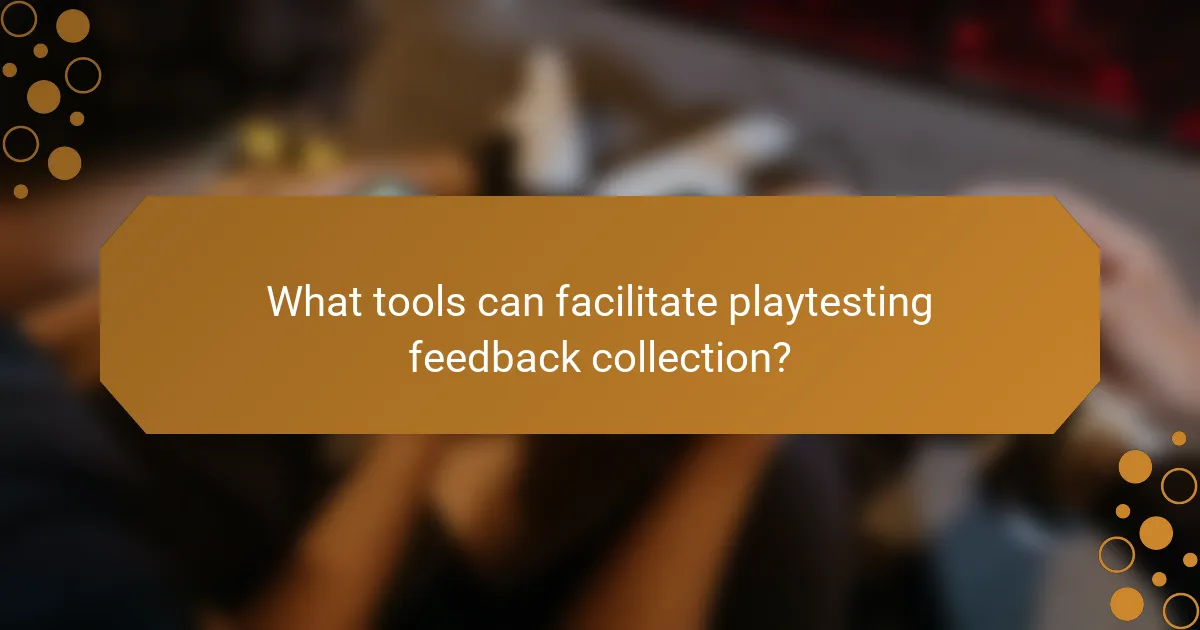
What tools can facilitate playtesting feedback collection?
Several tools can streamline the collection of playtesting feedback, enhancing player engagement and refining game narratives. Utilizing the right platforms can help gather insights effectively and organize them for actionable improvements.
SurveyMonkey for player surveys
SurveyMonkey is a popular tool for creating and distributing player surveys. It allows developers to design custom questionnaires that can capture player experiences, preferences, and suggestions efficiently.
When crafting surveys, focus on clear and concise questions. Use a mix of multiple-choice and open-ended formats to gather both quantitative and qualitative data. Aim for a completion time of around 5-10 minutes to maximize response rates.
Trello for organizing feedback
Trello is an excellent platform for organizing feedback collected from playtests. By creating boards for different aspects of the game, teams can categorize feedback into actionable items, bugs, and suggestions.
To make the most of Trello, establish a clear workflow. Use labels to prioritize feedback and assign tasks to team members. Regularly review and update the board to ensure that all feedback is addressed in a timely manner.
Discord for community engagement
Discord serves as a powerful tool for community engagement during playtesting. It allows developers to interact directly with players, fostering a sense of community and encouraging real-time feedback.
Set up dedicated channels for different topics, such as bug reports or gameplay suggestions. Engage with players through voice chats or live streams to gather immediate reactions and insights, which can be invaluable for refining the game experience.
PlaytestCloud for remote testing
PlaytestCloud specializes in remote playtesting, connecting developers with players around the world. This platform facilitates the testing of games in various environments and demographics, providing diverse feedback.
When using PlaytestCloud, ensure that your game is optimized for remote play. Provide clear instructions for testers and consider incentivizing participation with rewards. Analyze the feedback systematically to identify trends and areas for improvement.
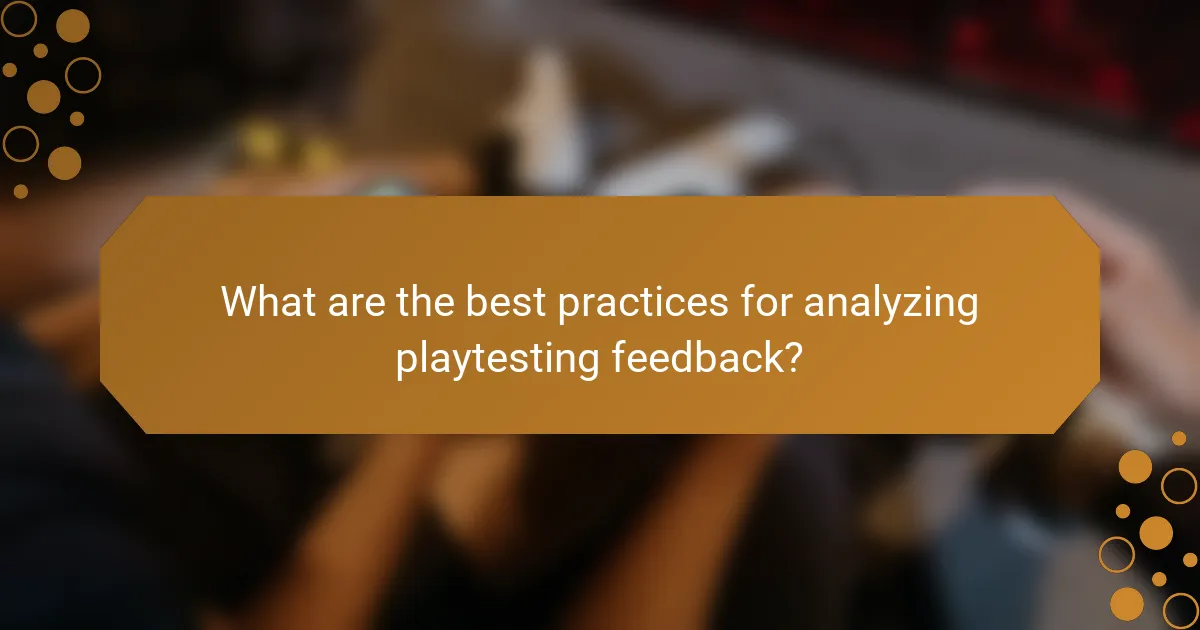
What are the best practices for analyzing playtesting feedback?
To effectively analyze playtesting feedback, categorize responses, prioritize insights, and focus on actionable recommendations. This structured approach helps refine game mechanics and enhances player engagement.
Data categorization techniques
Data categorization involves organizing feedback into distinct groups based on themes, issues, or player experiences. Common categories include gameplay mechanics, narrative elements, and user interface feedback. This helps identify patterns and areas needing improvement.
Utilize tools like spreadsheets or specialized software to sort feedback. For example, you might create columns for different categories and track frequency of comments within each. This visual representation aids in recognizing which aspects resonate most with players.
Prioritizing actionable insights
After categorizing feedback, focus on prioritizing insights that can lead to meaningful changes. Consider the impact of each piece of feedback on overall player experience and engagement. High-impact issues should be addressed first, while minor suggestions can be noted for future iterations.
To prioritize effectively, use a simple scoring system based on factors like frequency of mention and severity of the issue. For instance, if multiple players report a confusing tutorial, it should be ranked higher than a suggestion for additional cosmetic options. This ensures that resources are allocated efficiently to enhance the game.
